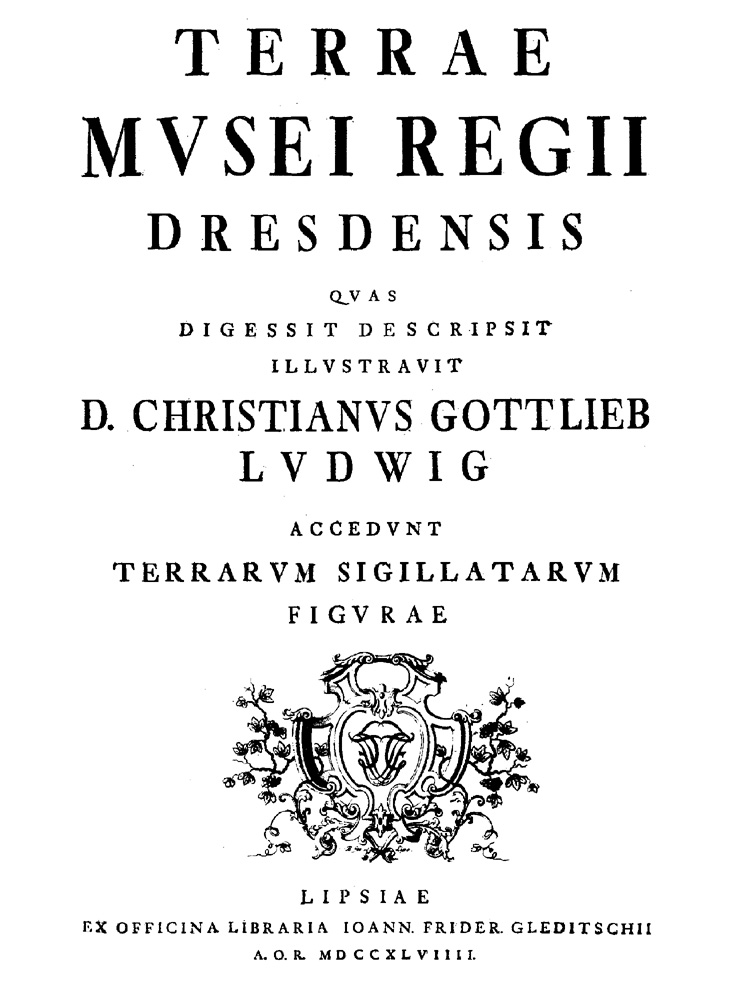LUDWIG, Christian Gottlieb.
(1709 – 1773)
Ludwig enrolled at the University of Leipzig in 1728. There he studied medicine and natural history, especially botany. He must have made a favorable impression, because in 1731, when Johann Ernst Hebenstreit was appointed to mount an expedition to Africa to be financed by the Saxon government, he asked Ludwig, his student, to accompany him. On Ludwig's return to Leipzig, he continued his medical studies, and in 1736 was awarded an M.D. In 1740, he was named professor extraordinary of medicine and in 1755 professor of Anatomy and Chirugie, followed by pathology in 1758. He was elected dean of the faculty. Ludwig wrote extensively in the fields on medicine and natural history, particularly botany.
Biographical references: ADB. • Biographie Universelle. • DBA: I 787, 36-87; 787, 90; II 835, 415-416. • Eitner, Quellenlexikon, 1959. • Hirsch, Biographisches Lexikon, 1884-8. • Hirsching, Historisch-literarisches Handbuch, 1794-1815. • Jöcher, Gelehrten-Lexikon, Supplement. • Meusel, Verstorbenen Teutschen Schrifsteller, 1802-16. • Nouvelle Biographie Générale (Hoefer). • Poggendorff: 1, cols. 1512-3. • WBI.

1. Latin, 1749 [Collection catalog].
Terrae | Mvsei Regii | Dresdensis | Qvas | Digessit Descripsit | Illvstravit | D. Christianvs Gottlieb | Lvdwig | Accedvnt | Terrarvm Sigillatarvm | Figvrae | [ornament] | Lipsiae | Ex Officina Libraria Ioann. Frider. Gleditschii | A.O.R. MDCCXLVIIII.
2°: [a]2 b-d2 A-Gggg2 Hhhh1; 162l.; [i]-xvi, [1]-298, [8] p., 12 plates. Page size: 380 x 246 mm.
Contents: [i-ii], Title page, verso blank.; iii-xi, "Praefatio."; xii-xvi, "Pracipui | qui de Terris scripserunt | Auctores." [=250 references].; [1]-298, Text.; [7 pgs], "Index."; [1 pg], Blank.
Rare. Describes the earths and mineral specimens contained in the collections of the Dresden Museum. Although focused on specimens found in Saxony, other localities are represented. The author has included copious linguistic remarks about the historic use of the mineral names, rich references to other literature, and an overall classification. Another section which is described in chapter 4 and fully illustrated on the 12 accompanying plates describes the "De terris sigillatis" (sealed earths) held in the collection. In ancient times, these were clays used for medicinal purposes.
The text is divided into six chapters that consists of: 1. De Terra in Genere (pp. 1-15), 2. De Terrarvm Generibvs (pp. 16-76), 3. De Terrarvm Specibvs (pp. 77-192), 4. De Terris Sigillatis (pp. 193-243), 5. De Terris Physice Consideratis (pp. 244-274), and 6. De Terris Medice Consideritis (pp. 275-298).
Bibliographical references: Beekman, Systematische Mineralogie, 1906: 36. • BL. • Fischer, Mineralogie in Sachsen, 1939: 108-16. • Freiesleben, Sächsische Mineralien-Verzeichnisse, 1828: no. 10. • Gatterer, Mineralogischen Literatur, 1798-9: 1, 262-3. • Lambrecht & Quenstedt, Catalogus, 1938: p. 215. • Leipziger gelehrte Zeitung: 1749, 766. • LKG: XVI 8. • Murray, Museums, 1904: 2, 215. • NUC. • Wagner, Mineralogisch Durchforschung Sachsens, 1902: 93.
.